Free Entry-Level Resume Templates and Writing Tips
With our free entry-level resume templates, you can help your resume to stand out from the competition like never before.
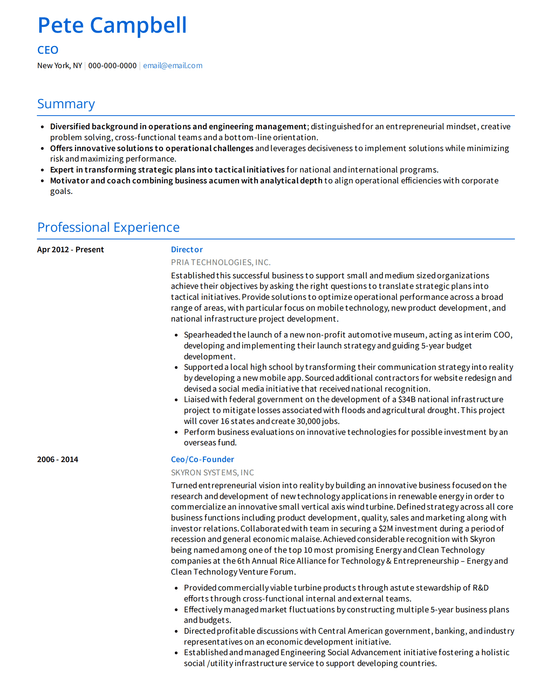
Entry level jobs can be incredibly competitive. Because their requirements tend to be less strict than the requirements of more senior roles, candidates rush to apply for them in huge numbers as soon as they’re advertised. But with our free entry-level resume templates, you can help your resume to stand out from the competition like never before.
Whatever your industry or specialization, VisualCV has an entry-level resume template to suit you. In fact, choosing between them might be the hardest part of designing your new resume! To help you out, we’ve written up a guide to choosing the right template for you—as well as some helpful tips for writing the resume once you’ve chosen your design.
In this article, we’ll cover the following points:
- How to select the right entry-level resume template
- Some of our best resume templates for entry-level jobs
- Choosing the right format for your resume
- How to write your resume once you’ve chosen your template
How to Select the Right Entry Level Resume Template
Choosing the right template means taking the time to think about the job you want. Not all industries have the same standards or norms, which means you’ll need to adapt your resume to the requirements of the role you’re hoping to win! Make sure you do some research into your industry of choice before you select your entry-level resume template, so you can be sure that you’re representing yourself as effectively as possible.
Does the job you’re applying for require a strong educational background, or a particular certification or qualification? If so, choose a template that will allow you to draw attention to your education section, where you can list all your qualifications prominently. Alternately, if your job doesn’t need any particular educational background, choose a template that will let you foreground something else.
In particular, as an entry-level candidate, you may not have as much work experience as candidates for more senior roles. That means it’s worth your while to choose a template that will allow you to focus on other sections instead. The right template will help you to use your strongest assets first, and pull attention away from the areas where your application might be lacking.
Entry Level Resume Template Examples
We’ve compiled a list of some of our favorite entry-level resume templates, to give you a head start in your search! Read on for our personal recommendations—and remember, these templates are all completely free, so why not try one out today?
Standard
If you’re looking for a simple, clean resume template, Standard has you covered! It offers everything you need from a resume—a streamlined layout, clear and readable fonts, and room for all the information you need—without any unnecessary trappings. At the very beginning of your career, this is the perfect resume template to show that you’re serious about your professional journey.
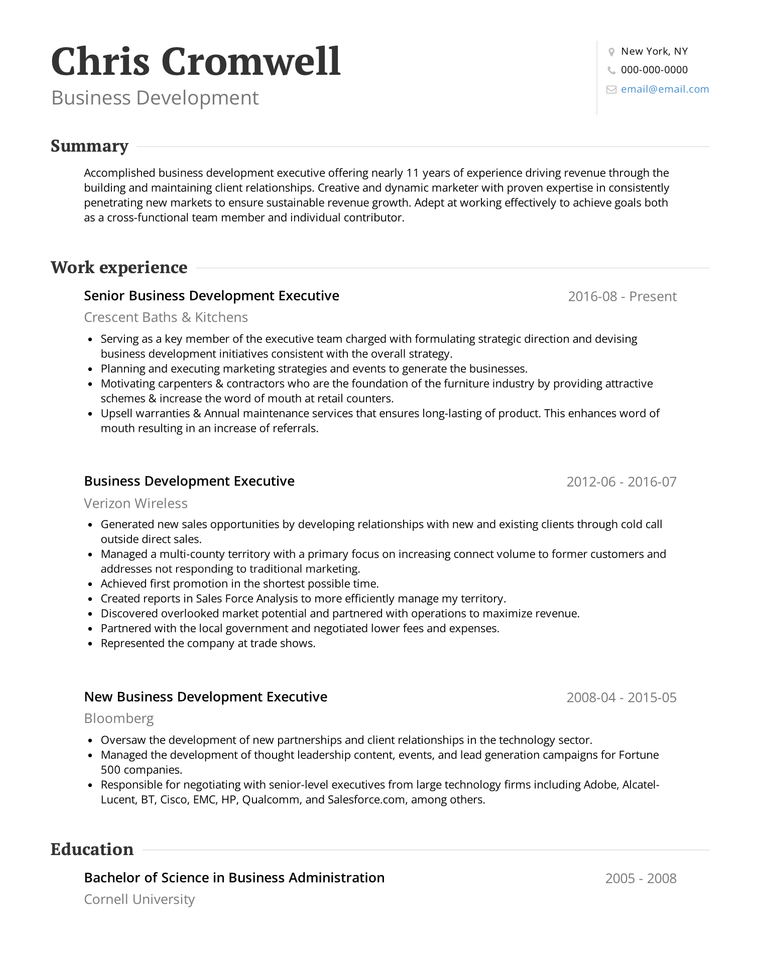
Chloe
Chloe offers a bold two-column design, paired with an elegant color scheme and an eye-catching choice of fonts. Still, it never sacrifices readability, and it won’t force you to leave out any vital information. If you’re looking for an entry-level role in a more creative or non-traditional industry, Chloe will give you all the tools you need to make a great first impression—including space for a portfolio, if you need it.
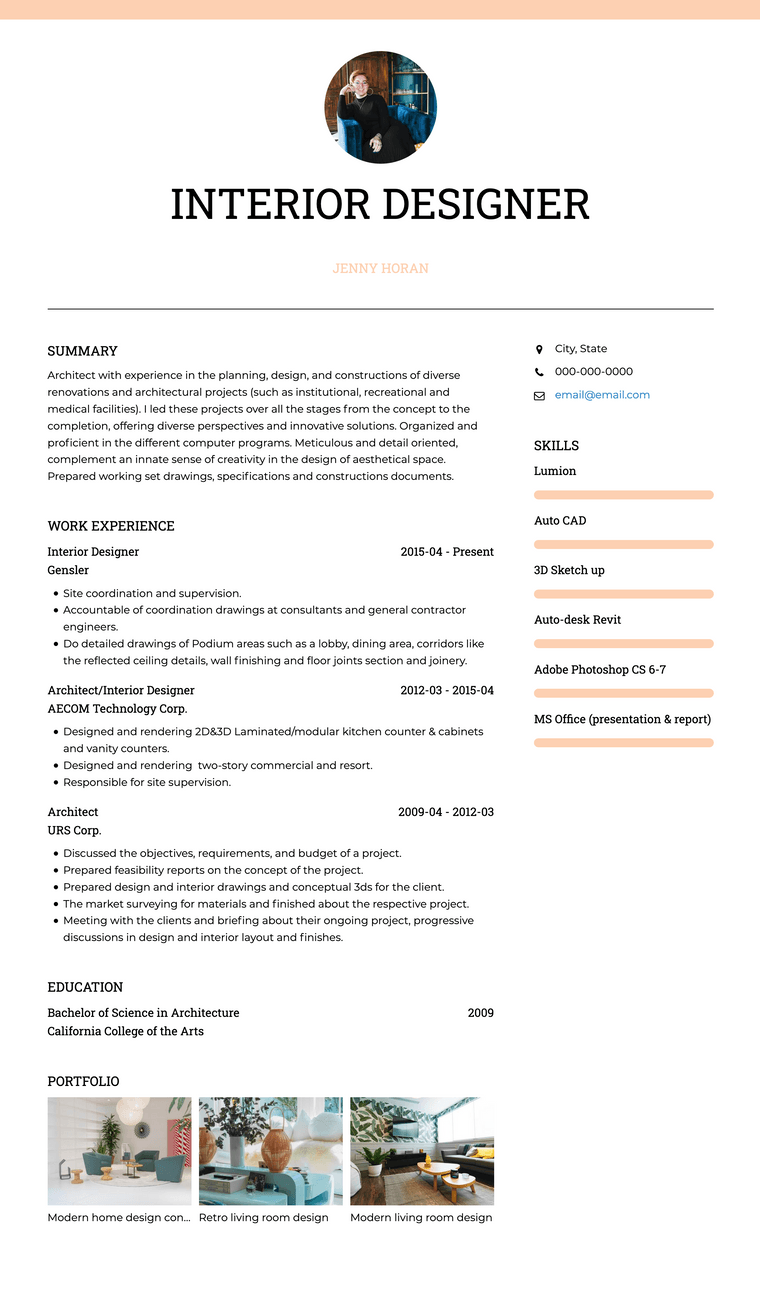
Corporate
Much like Standard, Corporate offers a sleek and clear design that’s easy to read at a glance. Instead of focusing on decorations, it puts the focus squarely on your skills, qualifications and achievements. As a new job seeker striving to be taken seriously, this resume will help you to present yourself as professionally as possible to hiring managers in any industry.
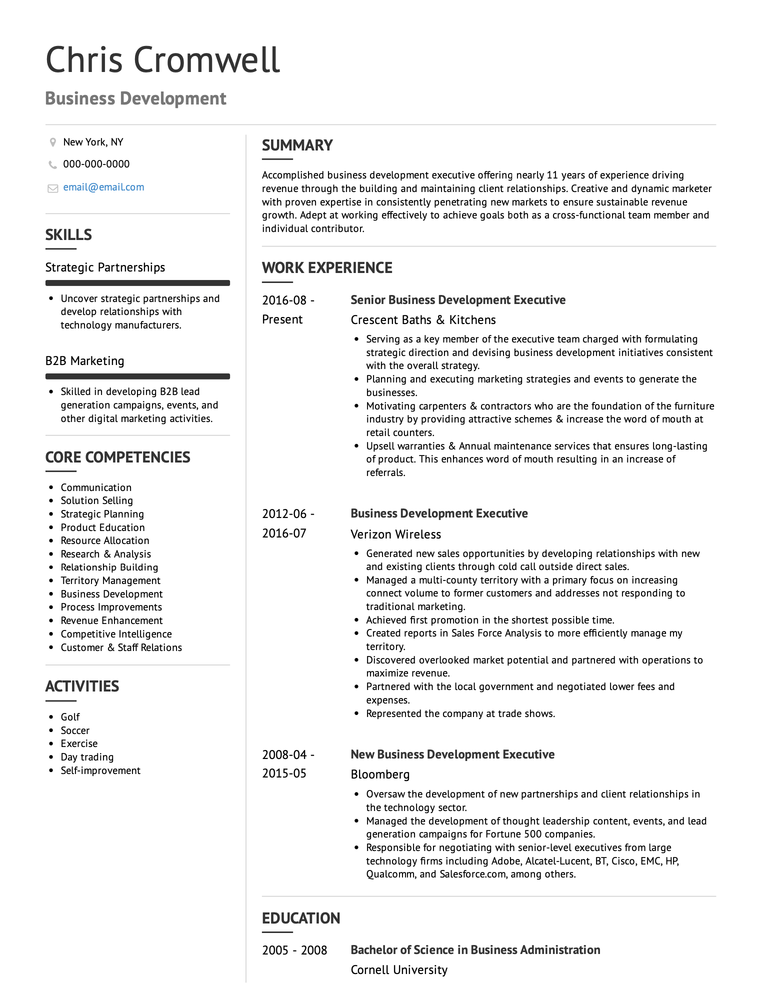
Monte
Monte blends a classic format with subtle and understated design elements, bringing a touch of class to your resume. It allows you to show a little of your personality without going over the top and alienating hiring managers—and, crucially, without leaving out any of the key information your resume needs. It also lets you strike a balance between your experience, your education and your skills, which is vital for an entry-level job seeker.
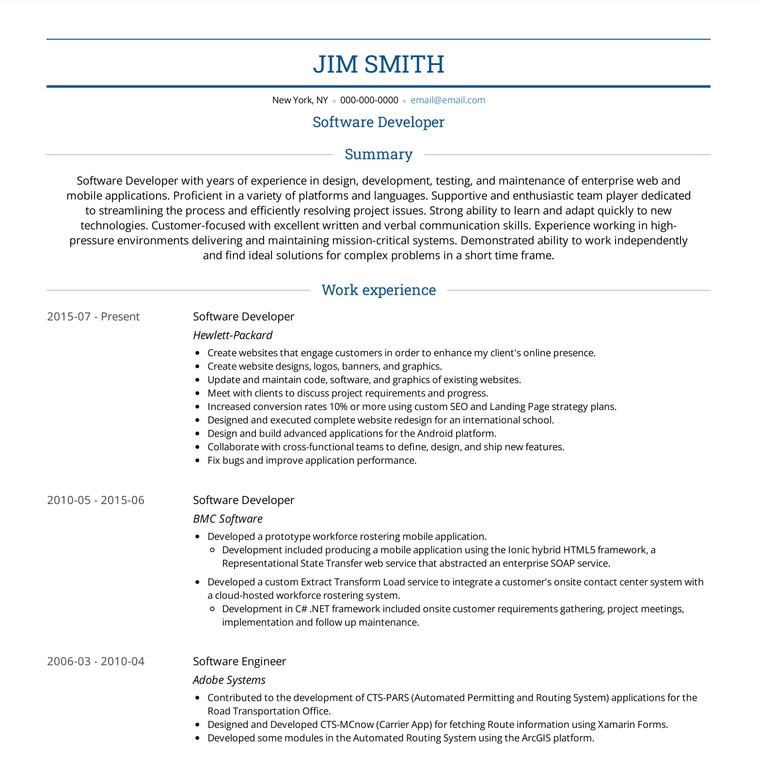
Monaco
With its subtle but eye-catching color palette and its space for a header image, Monaco makes an impression from the first look. But despite those flourishes, it makes expert use of a classic single-column format, so you can enjoy the perfect mixture of the traditional and the new. With plenty of space available for you to include all the relevant information, Monaco will support you all the way to your first entry-level role.
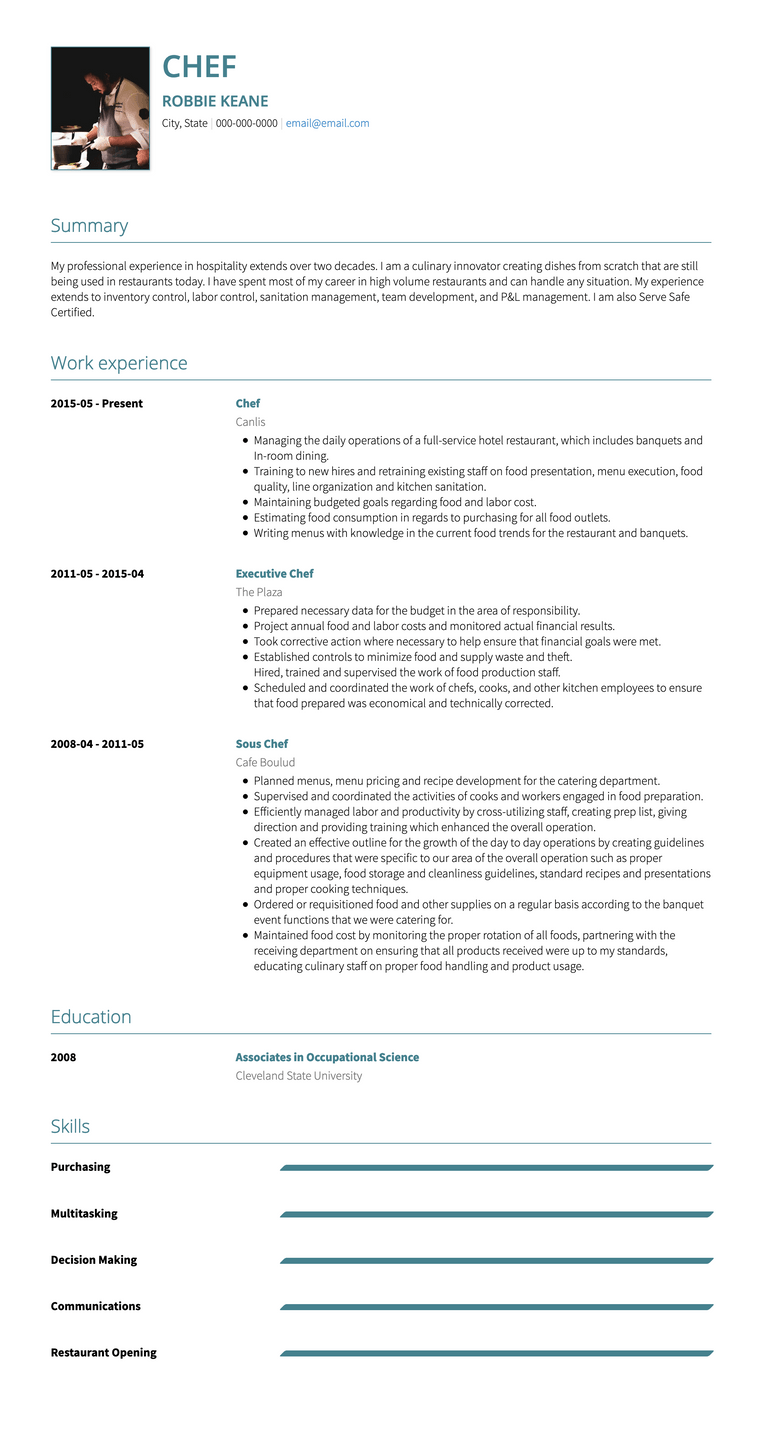
The Best Format for an Entry-Level Resume?
An entry-level resume needs to prioritize a different kind of information than a resume for a more senior role. At the entry level of your career, you may not have as much experience as a candidate who has already been working for a while. That means you need to select a resume template that allows you to take the focus off your past work experience.
But what should it focus on instead? Look for templates that have prominent space for a summary and a career objective right at the top of the resume, so hiring managers can see who you are as a candidate at a glance. That way, you’ll be able to lead with your strongest assets.
If your education section is strong, you should also consider a template that allows you to move it to the foreground. More experienced candidates can afford to deprioritize their education section, but as an entry-level candidate, you should aim to use it like an additional experience section. Studying for a qualification entails a lot of skills that are relevant to most work environments, so don’t be shy about showing them off!
In the same vein, focus on templates that let you foreground your skills, too. At the entry level, when your experience may be limited, it’s useful to ensure that your skills are front and center. They don’t have to come from professional experience—they may have come from study, extracurricular activities, or hobbies—so look for a template that doesn’t tie your skills to your experience section.
Lastly, you should choose a format that’s ATS compatible. Because entry-level roles are so competitive, it’s highly likely that hiring managers will use ATS software to filter out unqualified applicants. Making sure that the software can actually read your resume is vitally important! Fortunately, all of VisualCV’s resume templates are compatible with ATS software, so you don’t have to worry about making the wrong choice here.
How to Create an Entry-Level Resume After You Select a Template
Once you’ve chosen your entry-level resume template, it’s time to write your actual resume! Since you’re applying for an entry-level role, it’s likely that this will be your first ever resume—but don’t be intimidated by the writing process! There’s a clear formula for writing resumes that will help you to nail it on the first try.
First, you need to make sure that your summary makes a great first impression. Remember, a summary is a short and to-the-point description of your best qualities and the ways in which you meet the requirements of the job. Don’t let it turn into a second cover letter—make sure it stays concise, and keep it focused on what you can bring to the table as an employee.
As an entry-level candidate, you should also make sure that your objective is strong. An objective should be a single-sentence statement about your long-term career plans, and it’s especially helpful for entry-level applicants because it shows you have a sense of where you want your career to go in the future. Having that information can help hiring managers to take you more seriously.
Next, you should make sure that all the remaining elements of your resume are in the right order. If you don’t have any work experience, lead with your education section and your skills section next. If you’ve been employed before, it’s fine to put your work experience section ahead of the rest! As long as you’re leading with your strongest assets, you can proceed with confidence.
Your work experience section should list each of your previous jobs in reverse-chronological order, with the most recent item of experience first. Each item should include your job title, the name of your employer, the dates of your employment, and a bulleted list of what you did in the role. You should always refer to the job description, and make sure that your list of responsibilities is focused on proving that you have the right skills and experience for the role you want!
If your education is at the forefront of your resume, rather than your work experience section, you can go above and beyond by including a similar bulleted list of your achievements at school. If you received any prizes, accolades or scholarships, you can list those on your resume! They’ll show hiring managers that you’re a high achiever, even if it’s outside the professional sphere, and give them reason to believe that you can achieve just as highly as their employee.
Lastly, you’ll need to list your most relevant skills. The best way to do this is to look at the skills required for the job you want! Once you’ve identified those, you’ll know exactly what to include on your resume.
Copyright ©2025 Workstory Inc.